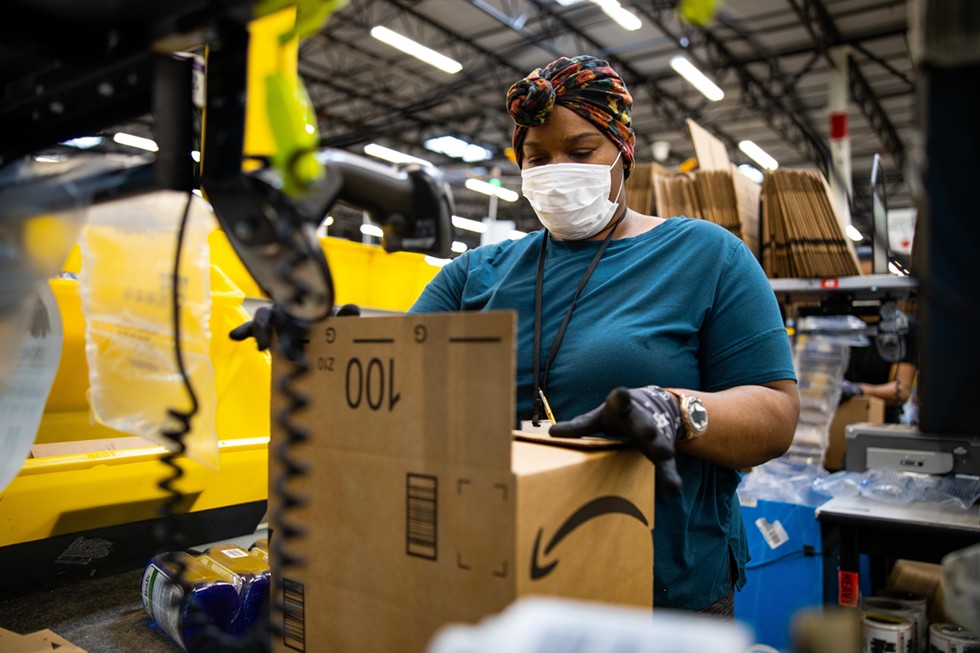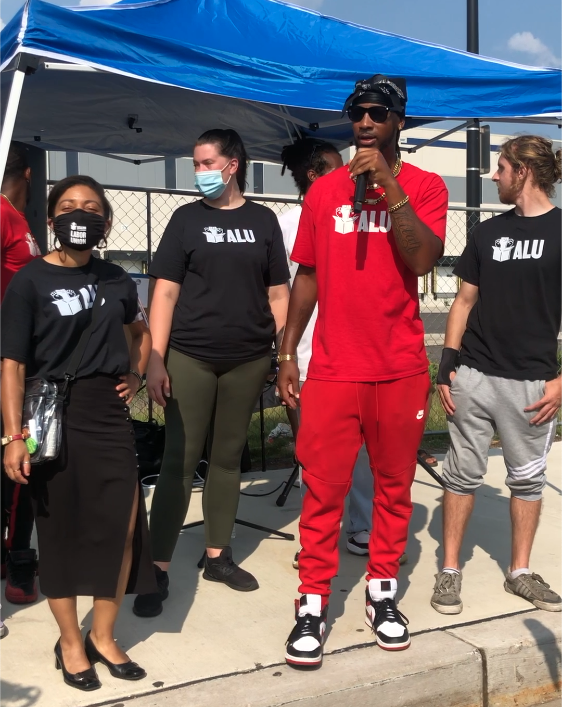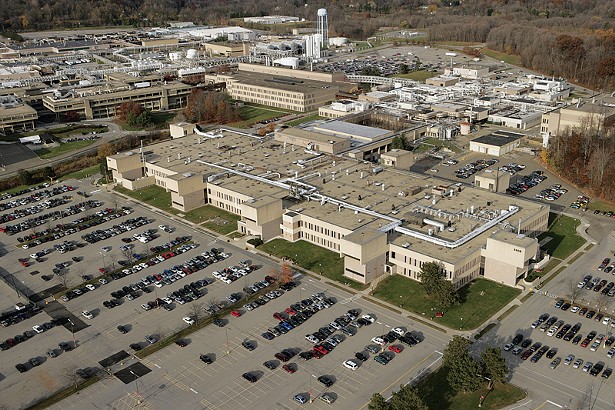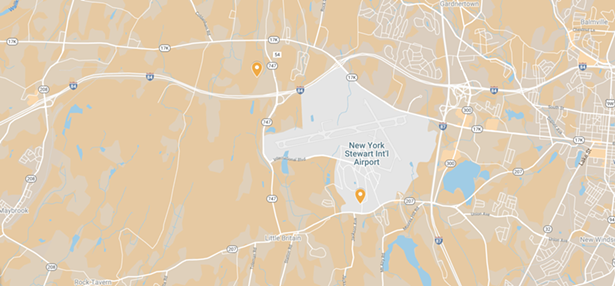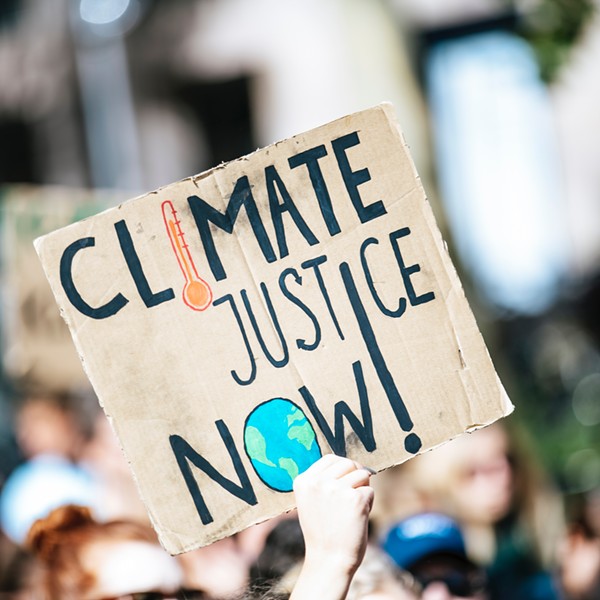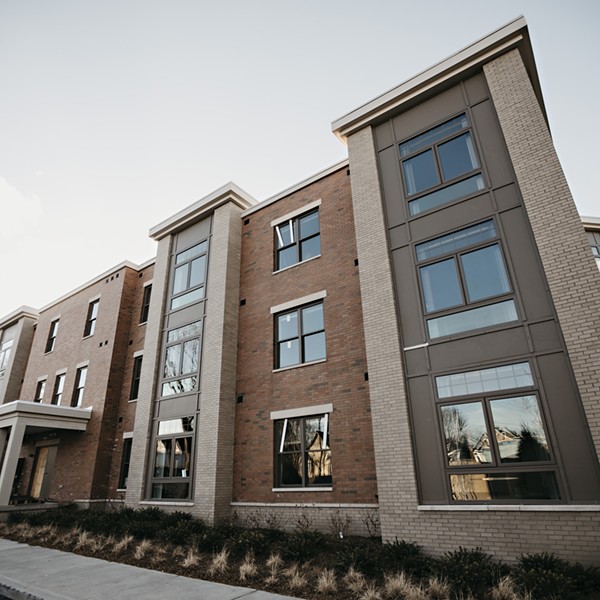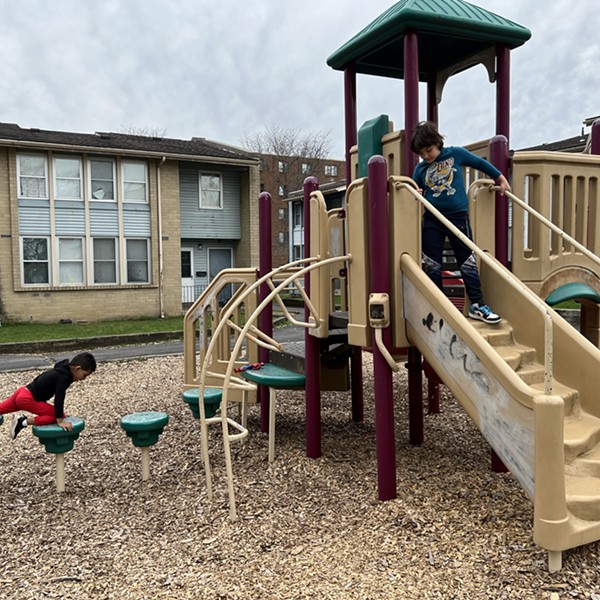In recent years, Amazon has grown to more than 1.3 million workers, the second largest employer in the US, after Walmart. Unlike Walmart, however, the great majority of those employees—950,000 of them—are fulfillment and logistics workers, not frontline sales associates. Amazon, then, is by far the largest employer of warehouse workers in the US, and its policies set the context for that economic sector.
Amazon is in the process of developing two large fulfillment centers in the Mid-Hudson Valley, in Montgomery and East Fishkill. The initial announcements were greeted by the usual triangle of discourse: the rah-rah boosterism of the pro-development, jobs-at-any-costs faction; the concern-mongering of anti-growth NIMBYists who resist changes to the “character” of their communities (and the blue-collar laborers that come with warehouses); and outcry from activists who have looked into Amazon’s record and practices surrounding fulfillment and logistics, which is not a pretty picture.
With its existing facilities in New York, Amazon claims to have already created more than 44,000 full- and part-time jobs in the state. These two new warehouses would theoretically lead to 1,500 or more jobs. However, the costs for those jobs could be high, in tax relief incentives and community impact. And they might not be good jobs—stable, well-paying, safe—but instead bad ones, with poor management that leads to workplaces that are unsafe, inhumane, and unfair, and work that alienates workers from finding meaning in their labor.
What do these Amazon projects mean for the region?
Amazon Warehouses Are Unsafe and Unforgiving
Amazon’s safety record at its distribution and sortation centers across the country is poor. In 2020, for every 200,000 hours worked at an Amazon warehouse in the United States—the equivalent of 100 employees working full time for a year—there were 5.9 serious incidents, according to data from the Occupational Safety and Health Administration analyzed by The Washington Post. That rate is nearly twice the rate of non-Amazon warehouses. By comparison, Walmart reported 2.5 serious cases per 100 workers at its facilities in 2020.
Last year, New York State Attorney General Letitia James launched an investigation into health and safety concerns at Amazon’s Staten Island distribution facility, JFK8, which has been the site of local union organizing. James filed a motion seeking a preliminary injunction to compel Amazon to address safety and health shortcomings at its warehouses, after uncovering evidence that the company’s “health and safety response violated state law by not providing reasonable and adequate protection to employees,” according to a press release. “Specifically, Amazon had inadequate cleaning and disinfection protocols and used productivity monitoring practices that failed to permit employees to take necessary precautions to protect themselves from the risk of COVID-19 infection, among other things.” The investigation also found that Amazon’s COVID-19 tracing program had “failed to consistently identify workers who came into close contact with employees who tested positive for COVID-19.”
As a consequence of health and safety issues at its workplaces, Amazon’s churn rate is astronomical. John Phillips, the company’s former head of mass hiring, wrote last year on LinkedIn that although Amazon hired more than 770,000 hourly workers in 2019, its overall headcount, including corporate staff, only grew by 150,000. As The New York Times notes, that means the equivalent of Amazon’s entire workforce—roughly 650,000 people at the start of 2019—left and were replaced that year.
Workers often leave after a single day, finding the pace impossible and Amazon’s algorithmic management oppressive and inhumane. But in none of the numerous stories about the new facilities in the Hudson Valley do we hear from labor unions or other groups discussing Amazon’s working conditions and labor practices. Instead, readers are typically treated to concerns from local citizens about traffic, noise, and pollution.
I spoke with the East Fishkill Town Supervisor Nicholas D’Alessandro, who stressed that local politicians and labor groups did not raise questions about Amazon’s warehouse workplace issues. D’Alessandro says that the town has strong incentives to renovate its underutilized former IBM space, and so long as the infrastructure issues, like traffic, are resolved, then East Fishkill’s long-term development interests are being served. Like any other legitimate company, Amazon has the right to do business in Dutchess County, and while D’Alessandro is aware of the controversies surrounding its warehouses, he says that the town is not in a position to preemptively raise labor issues prior to the opening of the facility.
Nor does the warehouse’s future workforce—who are expected to be locals—seem to be taking their part in the discussions. And who would that be? Labor groups like the Retail, Wholesale, and Department Store Union are not actively organizing and won’t discuss the situation with media. Local activists can’t speak entirely for workers who haven’t been hired yet. Politicians make their appeals to today’s voters, not future voters.
Amazon and Unions
William Brucher, a labor studies professor at Rutgers, believes that national unions will fill this void to confront Amazon, starting with the Teamsters Union. “I think they’re going to try to think systematically and comprehensively about putting massive resources into organizing Amazon,” he says.
The Teamsters adopted a resolution last June that makes organizing Amazon a priority. “Amazon is changing the nature of work in our country and touches many core Teamster industries and employers,” it reads. The company “presents an existential threat to the standards we have set in these industries.” The resolution states that the union will “supply all resources necessary” and will eventually create an Amazon division to help organize workers at the company.
But while Teamsters have protested the opening of non-unionized Amazon facilities in cities around the country, to date there has been no definitive action regarding the facilities in Montgomery and East Fishkill. We are likely to see a strong push by the Teamsters in Amazon’s New York operations in 2022, though, and the union was active in the 2019 campaign against Amazon’s proposal to build a headquarters in Queens.
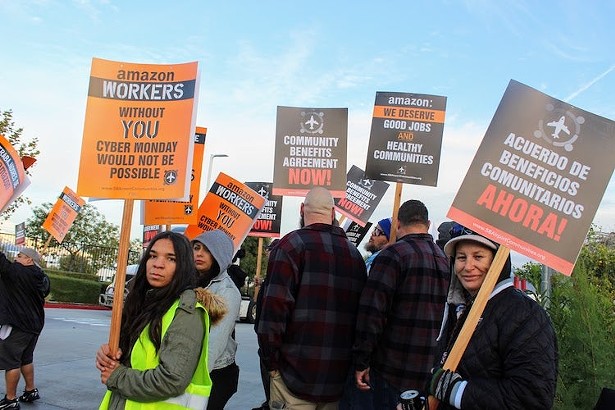
In other locales, major unionization efforts have been mounted. In Alabama, workers organized to protest the “minute-by-minute monitoring of their productivity.” That organizing effort failed, but a court has ordered a revote based on Amazon’s alleged meddling in the process.
Meanwhile in New York, workers at Staten Island—the same site that led to Attorney General James’s injunction—had organized a vote on forming a union, but the organizers of the independent Amazon Labor Union formed there have backed off their petition to the National Labor Relations Board, after gaining 2,000 union cards in a workforce of 7,000. (Thirty percent of workers at a location is usually the threshold for the NLRB to start the election process.) The lead organizer at Staten Island, Chris Smalls, was fired after making complaints about safety at the facility. As part of the injunction, James is seeking a court order to have Smalls rehired.
“Amazon has demonstrated, over and over again, that it refuses to prioritize its employees’ safety—and that is unacceptable,” says Stuart Appelbaum, the president of Retail, Wholesale, and Department Store Union. “Amazon workers have repeatedly reported concerns about serious issues impacting their health and safety during the pandemic. But instead of addressing these concerns, Amazon has lashed out at those workers. This must stop. No worker should be subjected to unsafe conditions at work. And no worker should be retaliated against for standing up for their rights.”
When asked about RWDSU’s position on the new Amazon facilities in the Mid-Hudson Valley, Chelsea Connor, the director of communications for RWDSU, declined to share details.
How Could Amazon Help the Region?
While Amazon bringing jobs to the area may seem a solution for creating more work, it’s likely that the negatives that have cropped up elsewhere will lead to similar outcomes here in the Hudson Valley. These are likely to be bad jobs.
Low-paid, dangerous, fast-paced, highly demanding physical work that stresses workers physically and mentally often leads to preposterous levels of turnover and injuries. In some locales, Amazon has effectively burned through all potential workers and has resorted to busing in workers. That outcome is not what local officials tout when they announce new Amazon facilities and the new jobs they may bring.
In the cases of the two facilities in Montgomery and East Fishkill, we witnessed local politicians touting jobs, jobs, jobs.
The East Fishkill project will transform a 631,000-square-foot former IBM campus. It is the largest redevelopment project in the town’s history. This facility will serve as a receiving center, where packages are received, processed, and redirected to other facilities elsewhere. Five hundred jobs are anticipated, and Amazon plans to create new roadways so that its own vehicles don’t overload city roads. To date, the construction company building the site has requested $2.76 million in sales tax exemptions, which is the sweetener that the state offers developers. The Dutchess County Industrial Development Agency also granted a 15-year Payment in Lieu of Taxes (PILOT) agreement in December of 2020 to the construction company building the facility.
County Executive Marc Molinaro welcomed the opportunity in a press release: “Despite uncertainty in the economy, this expansion will provide an important economic boost for the community and job opportunities for our residents. And we’re proud that Amazon has recognized the great strides we’ve taken over the last nine years to make Dutchess County so attractive for business.”
It seems more likely that Amazon was lured by tax breaks and proximity to I-84, Stewart Airport, and New York City. Molinaro’s office did not respond to requests to discuss the facility.
The Montgomery fulfillment center is on land immediately adjacent to I-84 and Stewart Airport, at the intersection of 17K and 747 in Orange County. The facility spreads one million square feet and cost north of $75 million to build. Plans were to staff up to as many as 800 jobs before the holiday season in 2021, though as of last summer, Amazon was so pressed for workers at the facility that it was dangling $3,000 hiring bonuses. In November, the company also opened a delivery station in a renovated 227,000-square-foot building near Stewart Airport in New Windsor, a short drive from the Montgomery warehouse.
The incentives for development in Montgomery include the same sort offered in East Fishkill, including no property taxes for the first five years and a PILOT agreement that carves out $2.7 million in future support to the Valley Central School District and guarantees that 80 percent of the workers will be local. According to the tax abatement, Amazon is expected to pay $26 million in taxes over 15 years, a $20.5 million reduction.
What is missing is any sort of discussion about working conditions, which everyone seems to sidestep. That doesn’t surprise Brucher, the Rutgers labor studies professor, who notes that local elected officials will always seize the opportunity to boast about creating jobs, and worry about what kinds of jobs and for whom later.
“There is this implicit belief that any job—any kind of job creation—is good. Any job is a ‘good job,’ politically speaking,” he says. “But there’s a built-in failure of imagination around quality and what that means for people working in those facilities and living in those communities.”
What About Housing?
There has also been little mention of the influx of workers that Amazon’s facilities are likely to bring to a region already confronting a housing shortage. While the rhetoric surrounding the facilities focuses on creating new jobs and taking steps to minimize impacts on traffic, the likelihood is that some of the Amazon workers will be commuting to the facilities, or perhaps moving to the region.
We should anticipate that the facilities will lead to increased demand for housing, and in the absence of other forces, this will drive up rents. That is a consequence that local officials are not talking about.
Last January, Amazon announced a $2 billion Housing Equity Fund designed to benefit low- and moderate-income families in three major communities: the Seattle metro area; Arlington, Virginia; and Nashville. These are locales where Amazon has a large number of employees:
The first investments include $381.9 million in below-market loans and grants to the Washington Housing Conservancy to preserve and create up to 1,300 affordable homes on the Crystal House property in Arlington, Virginia, and $185.5 million in below-market loans and grants to King County Housing Authority to preserve up to 1,000 affordable homes in the state of Washington.
Amazon is providing below-market capital in the form of loans, lines of credit, and grants to preserve and create 20,000 homes affordable for moderate- to low-income families in the Puget Sound region, Arlington, and Nashville. In each of these areas, Amazon is supporting households making between 30% and 80% of the area’s median income—that’s less than $79,600 per year for a family of four in the Washington, DC, metro area. In the Seattle-Tacoma-Bellevue metro area, this translates to a household of four earning less than $95,250 a year.
Amazon has not, as yet, made similar efforts in New York, despite a housing crisis across much of the state and the Hudson Valley. Just to lay out the numbers, rent rose in Dutchess and Orange counties by 5 percent between 2020 and 2021, while home prices grew over 50 percent in the same period in both counties. As I reported previously for The River, “in many areas, low- and moderate-income housing is almost impossible to find. The two arms of the housing crisis—exploding prices for single-family homes and the cumulative shortfall of affordable rental units—pinch those most in need.” Those are likely to include Amazon warehouse workers.
What to Expect Going Forward
The Hudson Valley’s proximity to New York City and its robust regional infrastructure make it an attractive locale for distribution centers. Amazon may open more in the future. And as more local workers experience the often-brutal working conditions typical in Amazon facilities—during an ongoing pandemic, no less—we should anticipate protests and unionization attempts to begin, here. Given Amazon’s history, any such attempts will likely be met with strong corporate opposition. Perhaps this region will become the next battlefield for unionization of Amazon’s facilities, with the Teamsters taking a key role.
My bet is that Amazon will not extend its Housing Equity Fund to regions where unionization drives are ongoing, even though it would be a smart thing for the company to do. At the same time, Amazon could be taking more steps to make its facilities less hellish for workers, but the company seems intent to drag its feet on that issue, despite all the help wanted ads on TV and in magazines touting health care and $18-per-hour jobs.
Considering New York’s Attorney General is suing Amazon for Covid-related health and hygiene deficiencies, and with the Teamsters taking aim on them, the 2022 Amazon versus unionization battlefield looks to be very crowded.
When we connect the dots, we can anticipate the following scenario:
- Amazon will find workers in the Hudson Valley to staff the warehouses, initially anyway.
- However, the workplace problems that plague many Amazon warehouses across the country will continue here.
- There is likely to be a large churn of workers who sign on and then quit because of the difficult work conditions, or alternatively, are fired because they can’t meet Amazon’s demanding productivity goals.
As noted earlier, in 2019 approximately 650,000 workers were hired and left Amazon within the year. If workers turn over at that rate, the company needs to hire eight to ten million people every year, as noted by former senior Amazon executive Paul Stroup. That’s 5 percent of the entire American workforce. At that rate, filling the 1,500 to 2,000 jobs at the new facilities in Dutchess and Orange counties will require 9,000 to 15,000 applicants, since six or seven apply for every worker hired. Given the economy, that could prove to be difficult, maybe impossible.
Stroup compared the churn to our economy’s addiction to fossil fuels, even as we grow ever more aware of climate change. “We keep using them,” he said, “even though we know we’re slowly cooking ourselves.”
*This article has been updated to include the fact that the Dutchess County IDA has granted a PILOT agreement to the company building the East Fishkill warehouse.







